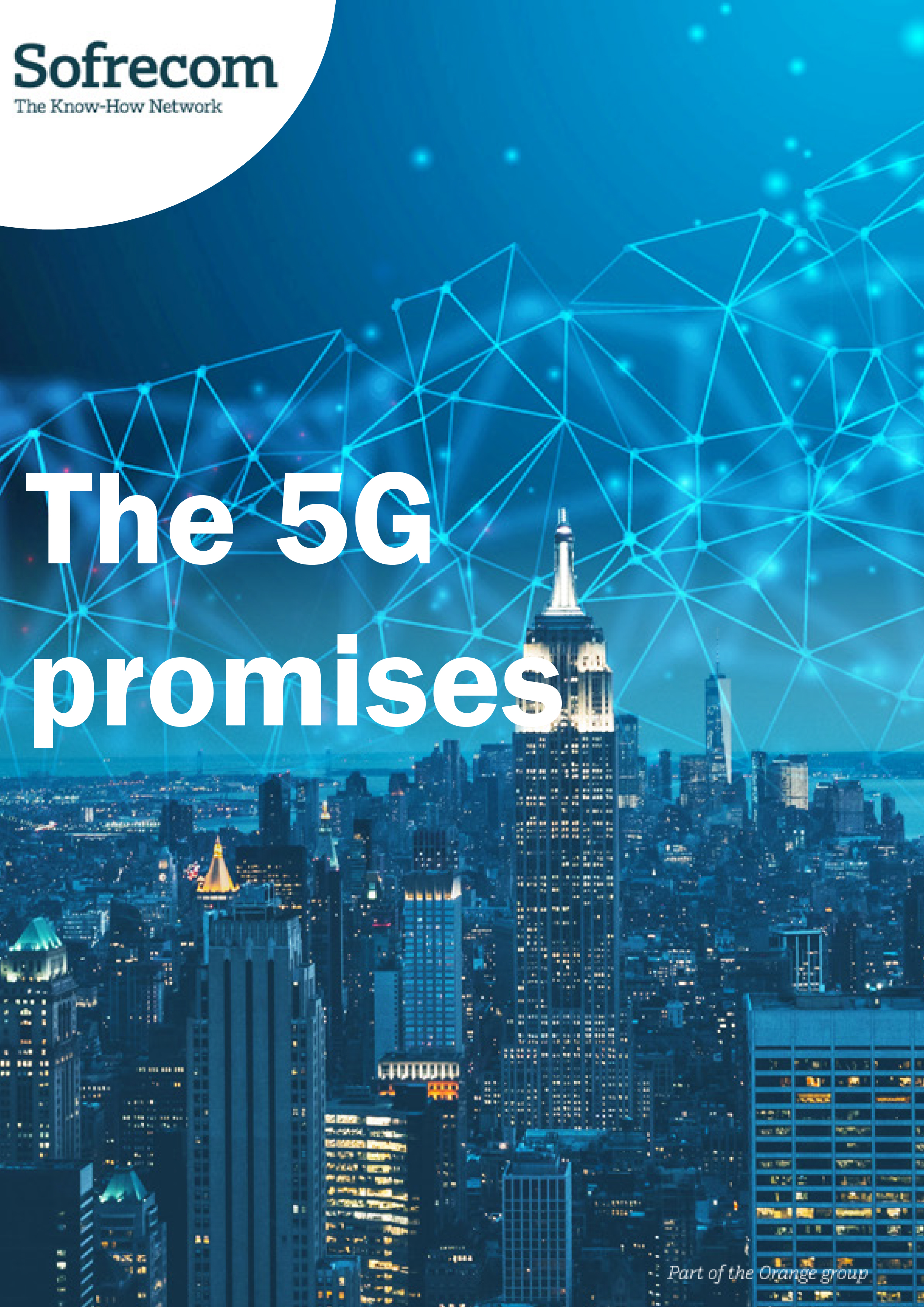
Regulators play a key part in the advent of 5G. Their work on a number of subjects is decisive in the deployment and commercial success of the new mobile technology, starting with their efforts to harmonize frequency bands, at the global level, and the work around freeing up the said bands, at the national level. In addition to this come trade-offs on the definition of the regulatory framework and the valuation and definition of coverage obligations. The earlier regulators are positioned, the more quickly 5G services will be launched.
A flexible regulatory framework to foster innovation
Setting a flexible regulatory framework is an opportunity for the regulator to facilitate the emergence of new-generation networks. By allocating the necessary frequencies sufficiently early on, it gives operators and equipment manufacturers the opportunity to carry out a number of experiments. In so doing, it fosters the rapid emergence of new differentiating uses such as network slicing, edge computing, IoT, autonomous cars, fixed 5G and services for professionals.
A “pro-innovation” regulatory policy could involve:
- temporary permits for experiments exempted from part of the regulatory framework,
- streamlined administrative procedures,
- support offers to start-ups so that they can stimulate the emergence of new uses.
Such provisions would enable the entire ecosystem (operators, manufacturers, start-ups, etc.) to better anticipate the arrival of 5G.
A number of key trade-offs
Even if they are not stakeholders in the design and deployment of communication networks, like the equipment manufacturers and operators, regulators are becoming, in their own way, architects of communication networks. They increasingly influence the way in which networks are deployed by inserting a certain number of objectives and obligations in the operators’ frequency usage permits.
Defining how and to whom licenses should be granted
In allocating 5G frequencies, regulators will be faced with multiple strategic questions and be required to make trade-offs: should any range of the spectrum be reserved for vertical players? How can the right balance be struck in allocating frequencies to the consumer market and the corporate market respectively? What is the best compromise between latency and quantity of spectrum allocated: should the players be synchronized or should guardbands be introduced?
How band frequency is allocated is another important issue. The regulator will have two options between which to choose:
- allocation by exclusive license: bands are allocated solely to mobile operators for a defined period.
- allocation by general authorization: the bands are said to be “free”, e.g. the 2.4 and 5 GHz bands used by Wi-Fi and Bluetooth.
While the vast majority of allocations will be made under a system of individual exclusive permissions, some players believe 5G will also need to use frequencies under general authorization.
Achieving the right balance between license prices and coverage obligations
Furthermore, some regulators, in agreement with Governments, will want to limit the cost of frequency allocations to preserve the operators’ investment capacity and enable them to deploy 5G on a massive scale. In France, for instance, after successively allocating 3G and 4G frequencies at high prices, the Government and ARCEP decided, via the “Mobile New Deal” in 2018, that frequencies would be allocated without additional cost, provided that operators agreed to make extremely significant efforts on coverage and deployment. In contrast, the 5G auctions organized in Italy have caused prices (stated in MHz per inhabitant) to soar to exceedingly high levels and will consequently limit the country’s 5G capacity for deployment.
Anticipating the uses of 5G
Fostering the rapid and mass uptake of 5G is a fundamental concern for regulators and governments not to curb the potential for the emergence of an app or national player willing to take advantage of the announced technological breakthrough.
Readers will recall that, despite all the efforts made by operators in the mid-2000s to find new uses for 3G to on-board the general public (video conferencing, live television), the technology remained in search of its purpose for quite some time. It was not until the advent of smartphones, crystallized by the release of the iPhone in 2007 (which ironically offered only a 2G modem at the time of its launch) that 3G was really used to its full potential.
As for 4G, it was conceived and designed at a time when smartphones had already been massively adopted by users. It is likely that Sweden’s lead in 4G deployment and uptake facilitated the emergence of Spotify in the music streaming market.
As far as 5G is concerned, it is difficult to envision with any certainty or precision how the actual use cases look and how much success they will enjoy. What's more, the current allocations are enabling the emergence of non-standard 5G networks (NSA) in the short term, when their functionalities remain to be completed. It is only at a later stage, probably from 2022 on, that truly innovative networks and uses will be able to be deployed with 5G standalone (SA). Given the uncertainties about future professional uses, regulators are taking different approaches. Some, such as the BNetzA in Germany, have chosen to reserve part of the spectrum, from the allocation of the 3.5 GHz band, for “vertical” industrial players. Conversely, other regulators such as ARCEP in France have chosen not to reserve frequencies for those players and instead wait until other frequency bands such 26 GHz are allocated.
To ensure the regulatory framework for 5G is adjusted to realities, regulators must have an ear to the ecosystem, while also trying to anticipate which uses will develop. Their challenge will consist in developing a framework of obligations that enables these innovative uses to develop (self-driving cars, verticals, fixed 5G, etc.), but is also based on the understanding that they may not materialize. Indeed, there are currently no indications that self-driving cars will definitely need 5G to function.





